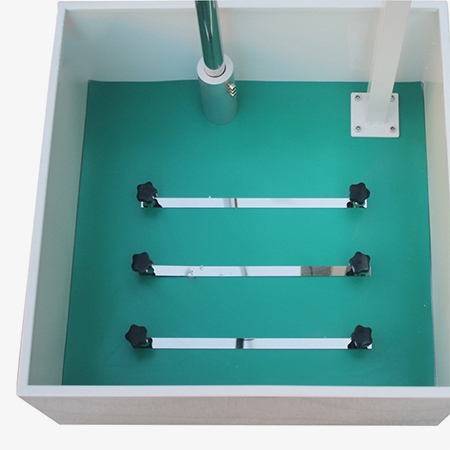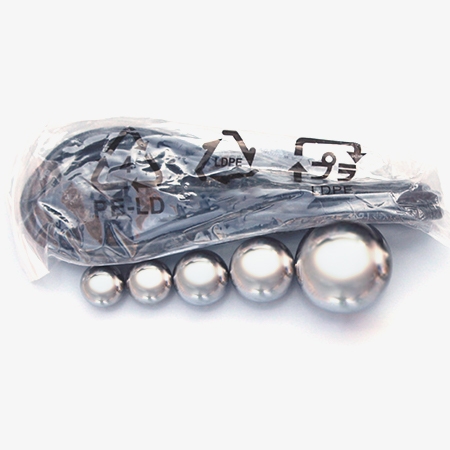The ball drop test equipment uses infrared laser positioning technology, with high test accuracy and efficiency, more reliable results, and is suitable for strict material performance evaluation and quality control.

Set the Test Height as Required
- The use of stainless steel fixing fixtures has high toughness.
- The ball drop tester uses electromagnetic magnets to attract, and the steel ball can be directly adsorbed on the electromagnet, which is simple and easy to use, with full details.
- The falling ball impact tester using infrared laser positioning, infrared laser-assisted positioning, and calibration significantly improves the accuracy and efficiency of the test。

Quality Craftsmanship Protection Test Safety
- The impact testing machine is equipped with 5 sets of instrument standard steel balls, which can meet a variety of testing needs.
- The button design is reasonable, and the one-button emergency pause protection operation is adopted, which is convenient to use.
- The test box adopts a 5-layer electroplating process, which is anti-corrosion and rust-proof, strong, and durable.
Applications
Impact testers are widely used to study the impact toughness and brittle transition temperature of new materials, provide a basis for the selection and application of materials, and ensure that products can withstand certain impact loads during use. In the automotive industry, impact testers can test the impact performance of various mechanical parts and components, such as gears, bearings, shaft parts, etc., to ensure that they can withstand impact loads without failure in actual use. Plastic films, composite films, cartons, and plastic containers can be tested for their impact resistance through impact tests to determine their ability to protect products from impact damage during the packaging process. Impact tests are performed on sports equipment such as rackets, bats, helmets, etc., to evaluate their ability to protect athletes and their performance during use.

Material Science

Packaging Industry

Sports Equipment

Automotive Industry
| Model | SISCO-IT-HTLQ1500 |
| Impact Height Range | 300-1500mm adjustable |
| Control Method | Electromagnetic controlled drop, single impact. |
| Test Sample Size | 50mm×120mm×60mm |
| Test Height | It can be arbitrarily set and adjusted to fall at a certain height. |
| Control Box | The separate electromagnet is installed from the bottom. |
| Power Supply | 220V 50Hz |
| Power | 1.5kw |
| Dimension | 500mm×500mm×1700mm |
| Weight | 36kg |
Q1: What is a Charpy Impact Tester?
A1: A Charpy tester is a device specifically used for Charpy impact tests. The Charpy impact test machine is mainly used to evaluate the toughness and fracture characteristics of metal materials under dynamic loads, especially in evaluating the low-temperature toughness of steel materials and the quality of welded joints. The working principle is mainly based on the law of conservation of energy and the energy change of an object when it is impacted instantly.
Q2: What is an Izod Impact Tester?
A2: An Izod impact strength test is a device used to perform an Izod impact test, which is used to evaluate the impact toughness of plastics, polymers, glass, and other non-metallic materials. The Izod impact test is similar to the Charpy impact test, but the placement and impact method of the specimen are different. A specimen with a specified shape, size, and notch type is clamped at one end, and the other end is used as a free end. Then, a pendulum of a specified height is used to hit the free end of the specimen once, and the work absorbed by the specimen when it breaks under impact is measured.
Q3: How to Use an Impact Tester?
A3: First, prepare the machine to ensure that the machine is in good working condition and check whether all parts are intact, including the pendulum, specimen fixture, measuring device, etc. Install the specimen correctly in the fixture of the tester. For the Charpy test, the specimen is usually placed horizontally; for the Izod test, the specimen is placed vertically with the notch facing the impact direction of the pendulum. Set the initial height of the pendulum according to the test standard to ensure that the pendulum has enough energy for the test when it is released. Release the pendulum and let it fall freely and hit the specimen. After the pendulum hits the specimen, record the final position of the pendulum or record the data through the automatic measurement system of the testing machine. Please note that different types of impact testers and different test standards may require specific operating steps and parameter settings. Therefore, before using the impact tester, the operating manual and relevant test standards provided by the manufacturer should be read and followed in detail.
Tips: Impact Tester Calibration Cycle
The impact testing machine calibration cycle is usually once a year, in order to extend the service life of the test machine and ensure the accuracy of the test results. However, the calibration cycle can also be adjusted according to the actual frequency of use, environmental conditions, and industry specifications. If the equipment is used frequently or in harsh environmental conditions, more frequent calibration may be required, such as once every six months or every quarter. Use standard specimens, calibrate by testing standard specimens with known impact strength, and compare the test results with the standard values.
Thank you for buying industrial test and measurement equipment on SISCO.com, all products sold by SISCO and the partner cover a 12 months warranty, effective from the date of receiving the products.
What is covered?
SISCO is responsible for providing free spare parts, and free technical support to assist the customer to repair the defective products until the problem is solved.
What is not covered?
- Product purchased from anyone other than a SISCO store or a SISCO authorized reseller.
- Expendable parts.
- Routine cleaning or normal cosmetic and mechanical wear.
- Damage from misuse, abuse or neglect.
- Damage from use of parts other than SISCO approved.
- Damage from use outside the product’s usage or storage parameters.
- Damage from use of parts not sold by SISCO.
- Damage from modification or incorporation into other products.
- Damage from repair or replacement of warranted parts by a service provider other than a SISCO authorized service provider.
- Damage caused by the application environment not meeting the product usage requirements and the failure to perform preventive maintenance.

